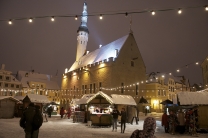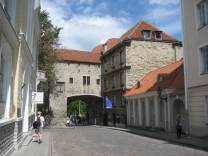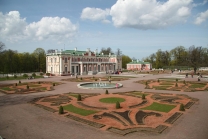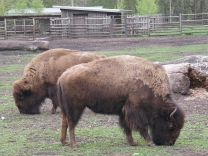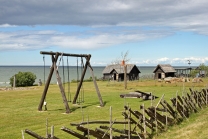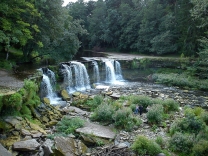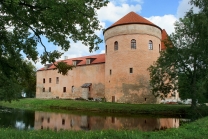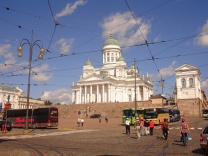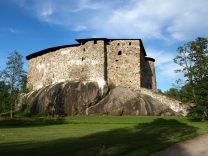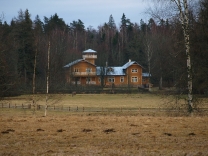No video yet

Toompea Castle
Toompea Castle (Estonian: Toompea loss, Latin: Castrum Danorum) is a castle on Toompea hill in the central part of Tallinn, the capital of Estonia. The castle, an ancient stronghold site in use since at least the 9th century, today houses the Parliament of Estonia.
History
According to legend, the entire hill of Toompea was made by Linda, who built it boulder-by-boulder with her own hands. For reasons associated with this legend, Tallinn is sometimes traditionally referred to as Lindanise ("The tit of Linda") in Estonian. The more prosaic truth is that settlers during the time of ancient Estonia made use of the natural hill as an easily defended stronghold. Over time, the place also developed into a commercial hub. It was probably one of the first inhabited areas of what later became Tallinn.
In 1219, the castle was taken over by Danish crusaders led by Valdemar II. According to a popular Danish legend, the flag of Denmark (Dannebrog) fell from the sky during a critical stage of the battle (known as the Battle of Lindanise). This first proper castle was referred to as the "Castle of the Danes", in Latin Castrum Danorum and in Estonian Taanilinnus. From the latter, the modern name of the city of Tallinn is possibly derived (see Modern name of Tallinn).
In 1227, the castle was taken over by the Order of the Brethren of the Sword, who initiated rebuilding schemes. The castle they started building is to a large extent the castle that is visible today. The castle again befell the Danes just ten years later, but was sold to the Teutonic Order in 1346, and would remain in their hands for the remainder of the Middle Ages.
As the crusading Teutonic Order was a religious order, the castle came to resemble a monastery in several ways. It included a chapel, a chapter house and a dormitory for the knights. The order was also responsible for erecting the still visible towers of the church, including "Pilsticker" (translated as "arrow-sharpener"), "Stür den Kerl" ("ward off the enemy"), "Landskrone" ("crown of the land") and the probably most famous, "Pikk Hermann", ("Langer Hermann" or "Tall...








